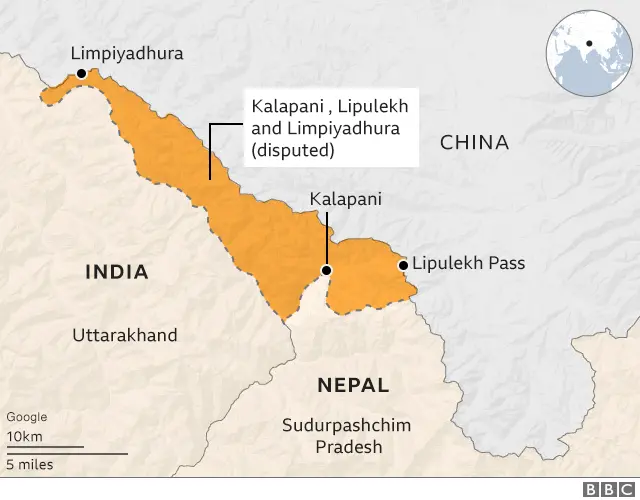- Views: 1K
- Replies: 14

Nepal and India, two neighboring countries with intertwined histories and cultures, find themselves locked in a territorial tug-of-war over the Kalapani, Lipulekh, and Limpiyadhura regions. These picturesque landscapes, nestled in the Himalayas, hold not only strategic importance but also deep-rooted cultural significance for both nations.
Nepal's Diplomatic Dance
Nepal's recent diplomatic maneuver, led by Deputy Prime Minister and Foreign Affairs Minister Narayan Kaji Shrestha, reiterates the country's persistent claim over the disputed territories. This move follows a similar action taken under the previous KP Sharma Oli administration, which involved incorporating these areas into Nepal's official national map.The current government's approach, while assertive, emphasizes the pursuit of an amicable resolution through dialogue and diplomatic channels. However, their decision to depict the contested regions on the new 100 rupee note has drawn criticism from India, potentially complicating the path to a peaceful settlement.
India's Firm Stance
India, on the other hand, stands firm in rejecting Nepal's claims. The country's External Affairs Minister, S Jaishankar, has labeled Nepal's actions as unilateral and unproductive. He emphasizes the ongoing discussions between the two nations through established diplomatic channels.India's disapproval of Nepal's inclusion of the disputed areas in their new currency note further highlights the deep-seated disagreements and the potential for escalating tensions.
The Root of the Disagreement
The crux of the issue lies in the interpretation of the Sugauli Treaty of 1816, which established the initial boundaries between the two countries. Both sides offer conflicting interpretations regarding the exact demarcation of the border, particularly concerning the source of the Kali River, which is considered a key reference point.The dispute intensified in 2019 when India released a revised map incorporating the contested areas. This move prompted Nepal to respond in kind in 2020, further deepening the divide.
A Murky Path Forward
While Nepal advocates for dialogue, India's skepticism towards unilateral actions casts a shadow over the prospects of a swift resolution. The path forward remains uncertain, requiring both nations to navigate the complexities of history, national pride, and strategic interests.Resolving this long-standing dispute necessitates a genuine commitment from both nations to engage in constructive dialogue, prioritize mutual respect, and seek common ground based on historical evidence and a shared vision for a peaceful and prosperous future.
In conclusion, the Nepal-India border dispute remains a complex and sensitive issue with historical, political, and emotional dimensions. While the path to a resolution may be arduous, it is not insurmountable. By fostering open communication, understanding, and a willingness to compromise, both nations can pave the way for a lasting and mutually beneficial solution.
Disclaimer: This analysis is based on the information available open-source resources. It aims to present a balanced overview of the issue and does not endorse any particular viewpoint.



